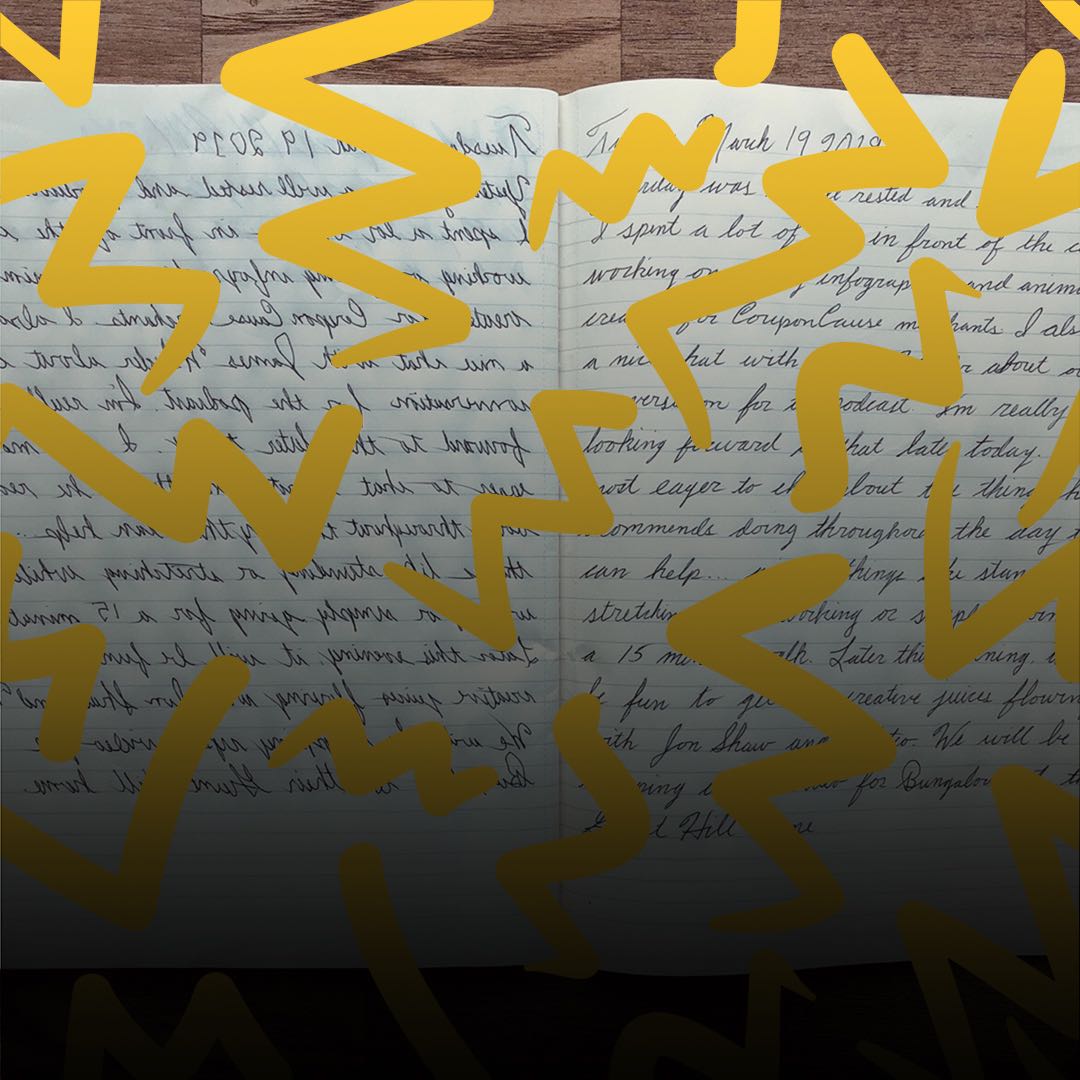In my conversation with Michael Lavery, we spent some time talking about the impact handwriting can have on cognitive function and specifically, the effect left-handed mirror writing can have. This is one of the training methods introduced in Whole Brain Power that I have been practicing for the past several months (you can see some samples below).
Interestingly, and as mentioned by Michael in our episode, Leonardo Da Vinci used to write in his journals left-handed in a mirror image. Though not certain, there are solid theories as to why Da Vinci might have done this. One motivator may have been his desire to maintain secrecy and to make reading his notes more difficult by writing in a mirror image.
Another interesting thought is that since he may have been left hand dominant (though likely ambidextrous) he would write in a mirror image so that he wouldn’t smudge the page as he went.
Regardless of why Da Vinci wrote in mirror image, there is reason to believe it can have a positive impact on the brain.


After writing with both hands for roughly 3-4 months, one of the easiest improvements to notice is in my handwriting itself. It’s hard to be sure with only my experience to look at, but I would be willing to bet that I wouldn’t have seen such improvements in my right hand had I not also been writing in a mirror image with my left hand. Michael mentions in the podcast how learning to write with the non-dominant hand is like being both the teacher (dominant hand) and the student (non-dominant hand). When I think what it’s like to teach someone something, I think about how the act of teaching actually gives me a better understanding of the topic as well. On the surface, the analogy works.
Articles on the effects of cursive handwriting are easy to find and suggest that cursive writing can improve recall and motor skills, especially in children. Articles about mirror writing are more scarce and largely written about the cause of mirror writing as opposed to examining the potential effects practicing can have on the brain. This is likely because outside of deliberately doing it for practice, mirror writing may emerge after neurological events, like strokes. For example, this meta-analysis focuses on the emergence of mirror writing in adults after a neurological event and in children as they are learning to write.
“The Mirror Man”
In “Mirror man: a case of skilled deliberate mirror-writing“, researcher Robert D McIntosh and his team studied an artist, Kasimir Bordihn, who is right-hand dominant when writing but had been practicing with his left hand in a mirror image for over 50 years at the time of the study. The writers begin the paper noting that mirror writing occurs in three forms: spontaneous (children), involuntary (brain-damaged adults) and deliberate. It’s the final form, deliberate practice, that the study looks at and which we are concerned with here.
8 total directions of writing were tested including up, down, left and right with both the left and right hands. When comparing all 8 writing samples, the researches found that the subject’s left-hand mirror writing was the most similar to the regular writing the subject produced with his dominant right hand. It’s possible, they conclude, that the subjects left hand is executing a “motor program” for handwriting that has already been developed by the dominant hand and is being applied in a mirror image with the non-dominant hand. Teacher and student, indeed.
Essentially, your dominant hand has “programmed” a sequence of movements over years of writing and repetition. The movements in this program are generally either adductive and move toward your body midline, or they are abductive and move away from the midline. When these movements are taken from the right hand and applied to the left, a mirror image results as the left-hand moves away from and towards the body midline in the same sequences as the right, but in the opposite direction. To see it in action, simply spread your arms wide and then move them both toward your body midline until your hands touch. Your right hand must move left and the left moves right. However, the same muscles are being activated in both arms as they move towards the midline and meet.
When you consider that the right-brain controls left-hand movements and the left-brain controls right-hand movements it seems reasonable to postulate that writing with the non-dominant hand in mirror image may strengthen the brain’s connecting nerve fibers, known as the corpus callosum. Since I am right-handed, my left hemisphere must take the writing program it has developed and send it to the right hemisphere to execute with my left hand. Could this potentially strengthen that connection? It’s possible. It’s believed that a thicker corpus callosum indicates improved “inter-hemisphere information transfer” and potentially higher intelligence.
Improved memory and sharpened focus are two other potential benefits I would attribute to my training. Visit Michael’s Perfect Penmanship here.
